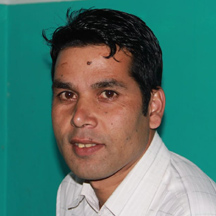Money
Nepali large cardamom growers and traders cheer rebound in prices
The price has reached Rs875 per kg, up from Rs750 last year, and is expected to rise further, traders said.
Krishana Prasain & Ananda Gautam
Nepali cardamom growers and traders are cheering a rebound in prices after a years-long depressed market as a fall in output in India and Bhutan, the two other major producers, sparks a sales surge.
Traders expect the price to cross Rs1,000 per kg amid heightened demand from the international market, the Middle East in particular.
In 2014, large cardamom hit a high of Rs2,500 per kg. Since then, it has been going steadily downhill, reaching Rs750 per kg last year.
Nepal has been reaping a windfall gain from high tea prices this year after production dropped in the southern neighbour. The price of Nepali teas jumped by 40-60 percent on strong buyer demand and a huge shortfall in India.
According to Nirmal Bhattarai, immediate past president of the Large Cardamom Entrepreneurs Association of Nepal, large cardamom fetched Rs750 per kg last year. This year, at the beginning of the harvest, the price has already reached Rs875 per kg. He said that the price had been growing unexpectedly.
“This is because large cardamom output in Indian and Bhutan fell steeply this year,” he said, adding that production in Nepal may also see a drop of 20 percent.
Nepal is the world's largest producer of large cardamom with a 68 percent share of the global market, followed by India (22 percent) and Bhutan (9 percent).
According to the Trade and Export Promotion Centre, the country exported large cardamom worth Rs2 billion in the first four months of the current fiscal year, a sharp jump of 32 percent compared to the same period last year.
Large cardamom shipments amounted to 2,562 tonnes during the four-month period against 1,913 tonnes in the corresponding period in the last fiscal year. In the last fiscal year, total exports of large cardamom were valued at Rs4 billion.
Bhattarai said that Nepali traders had started stockpiling the spice following an abrupt rise in demand.
Restaurants and hotels are upbeat following news of the arrival of a vaccine against Covid-19, and this has further encouraged traders and entrepreneurs of increased demand.
India is the biggest buyer of Nepal’s large cardamom, absorbing 99 percent of its exports. The spice is re-exported to Pakistan and the Middle East where it fetches high prices because of the local preference for the Nepali product.
Pakistan is the largest importer of large cardamom, purchasing roughly 60 percent of India’s large cardamom exports. The product is used in pods by the local Muslim community in biryani dishes, a Pakistani cuisine, as a symbol of prosperity and wealth.
Large cardamom production in Darjeeling and Sikkim, the major producing areas in India, had been increasing annually, but this year output is expected to plunge by half, said Bhattarai.
Bhutan has also experienced lowered production this year. Its exports mostly go to Bangladesh while shipments to India have slowed which has benefited Nepali producers, he said.
The association expects exports to swell by 40-50 percent with good value on offer. Large cardamom is graded into three categories—jumbo jet, standard and chalan chalti—and are priced accordingly.
Sujit Bamsha, a trader from Birtamod, said that large cardamom prices jumped as high as Rs1,000 per kg on Tuesday. “Prices keep fluctuating every hour.”
Bamsha said that he purchased the spice at Rs575 per kg. Farmers from Taplejung, the country’s largest producer, had sold their crop for Rs475 per kg.
Raj Kumar Karki, president of the association, said that the rise in prices after the end of the festival season had raised the hopes of traders and farmers. "Indian traders are now focused on Nepal's cardamom as demand for the prized spice has been growing in the global market," Karki said.
According to sources, some big traders from Siliguri are eying the Birtamod market.
"Our cardamom goes to India. Despite people's livelihoods in India being impacted by the coronavirus and consumers looking for essential food items, the current price boom can be considered a positive sign," Karki said.
Amid the upbeat mood, cardamom farmers are holding on to their harvests with the expectation that prices will rise further. The large cardamom harvest starts in mid-July and ends in December. Farmers store the harvest in their homes or in traders' warehouses. Some farmers also sell their crop right away.
According to the association, cardamom cultivation has spread to 43 districts of Nepal. Taplejung district alone accounts for 47 percent of the country's total production.
Except for Faktanglung Rural Municipality-7 Olangchung Gola, cardamom is grown in all 61 wards in the district. Large cardamom produced in Nepal is collected in Birtamod and exported to India through Kakarbhitta. Grading and packaging work is done in Birtamod.




 17.12°C Kathmandu
17.12°C Kathmandu














%20(1).jpg&w=300&height=200)
